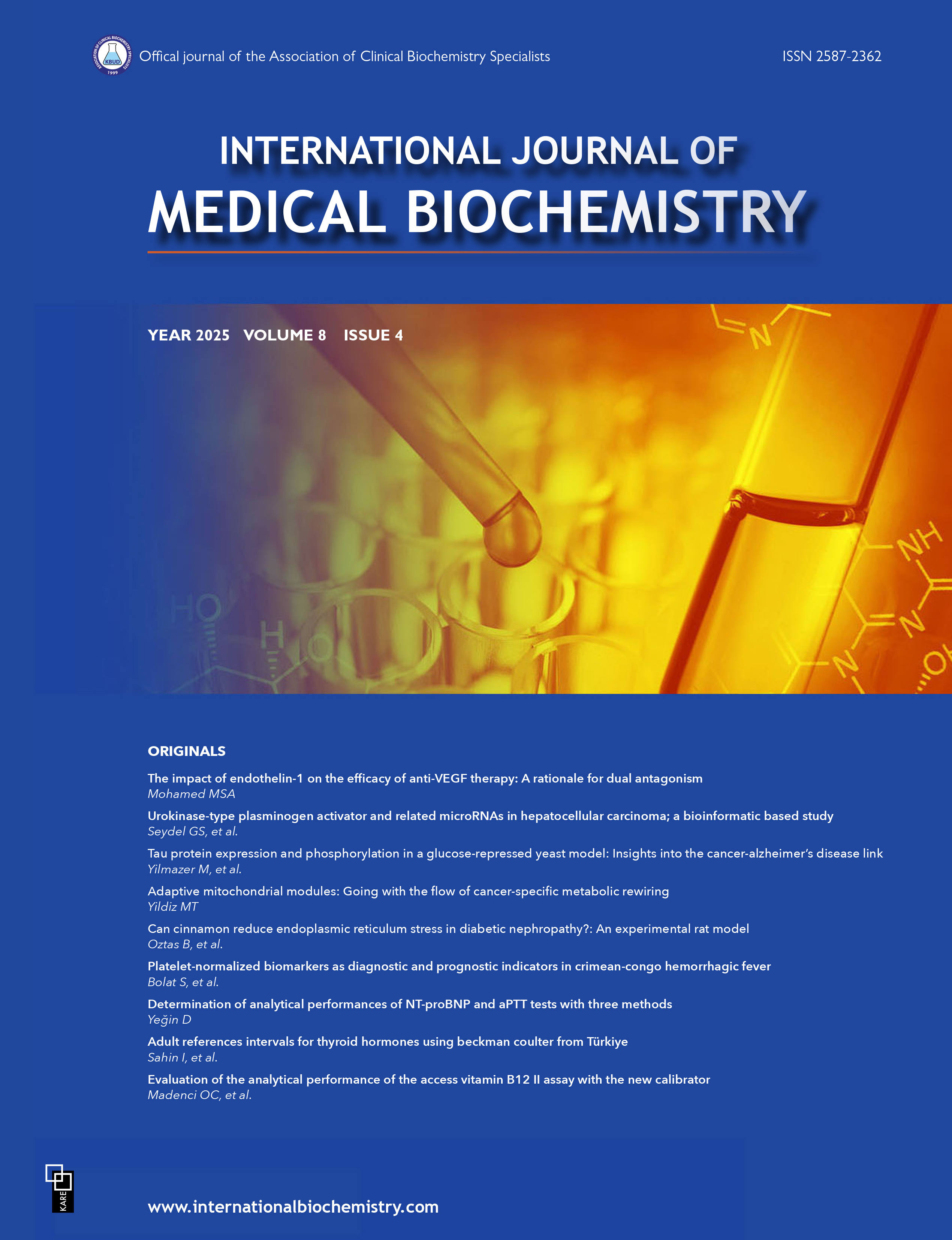Evaluation of analytical phase performance of coagulation parameters by sigmametric methodology
Aziz Sener, Fatma Ucar, Cagin Sehit, Rabia Seker, Serhat Takil, Semra Isikoglu Hatil, Arzu KosemDepartment of Medical Biochemistry, Ankara Etlik City Hospital, Ankara, TürkiyeINTRODUCTION: This study aimed to evaluate the analytical performance of coagulation tests (prothrombin time (PT/INR),
activated partial thromboplastin time (aPTT), fibrinogen, and D-dimer) using the Six Sigma methodology, focusing on identifying areas for improvement to enhance healthcare quality.
METHODS: Internal quality control (IQC) and external quality control (EQC) data from September 2023 to February 2024
were collected for coagulation parameters analyzed by four Cobas T711 analyzers. Sigma values were calculated using IQC, EQC, and total allowable error (TEa) data. The sigma value for each parameter was calculated according to the formula (TEa%bias %)/CV%. The outpatient sample analyzers were labeled A1, A2, and A3. The one that analyzes samples from emergency and intensive care patients was labeled B.
RESULTS: Across analyzers A1, A2, A3, and B, sigma values varied for different coagulation parameters. Notably, the D-dimer parameter consistently exhibited excellent performance (sigma >6) for all analyzers. In contrast, some analyzers showed poor performance for aPTT and PT parameters at level 1 (A1 and A3 for aPTT, B for INR). Fibrinogen performance varied, with some analyzers showing excellent performance (sigma >6) and others falling below acceptable levels.
DISCUSSION AND CONCLUSION: By identifying areas of low performance, particularly in aPTT and INR parameters, this study highlights the importance of continuous quality improvement in laboratory testing. Addressing issues identified through the
Six Sigma methodology can enhance the reliability of laboratory results and ultimately improve patient care. Further research and initiatives focused on analytical process improvement are needed to achieve higher quality standards in laboratory testing.
Keywords: Analytical performance, coagulation, quality control, Six Sigma
Manuscript Language: English







